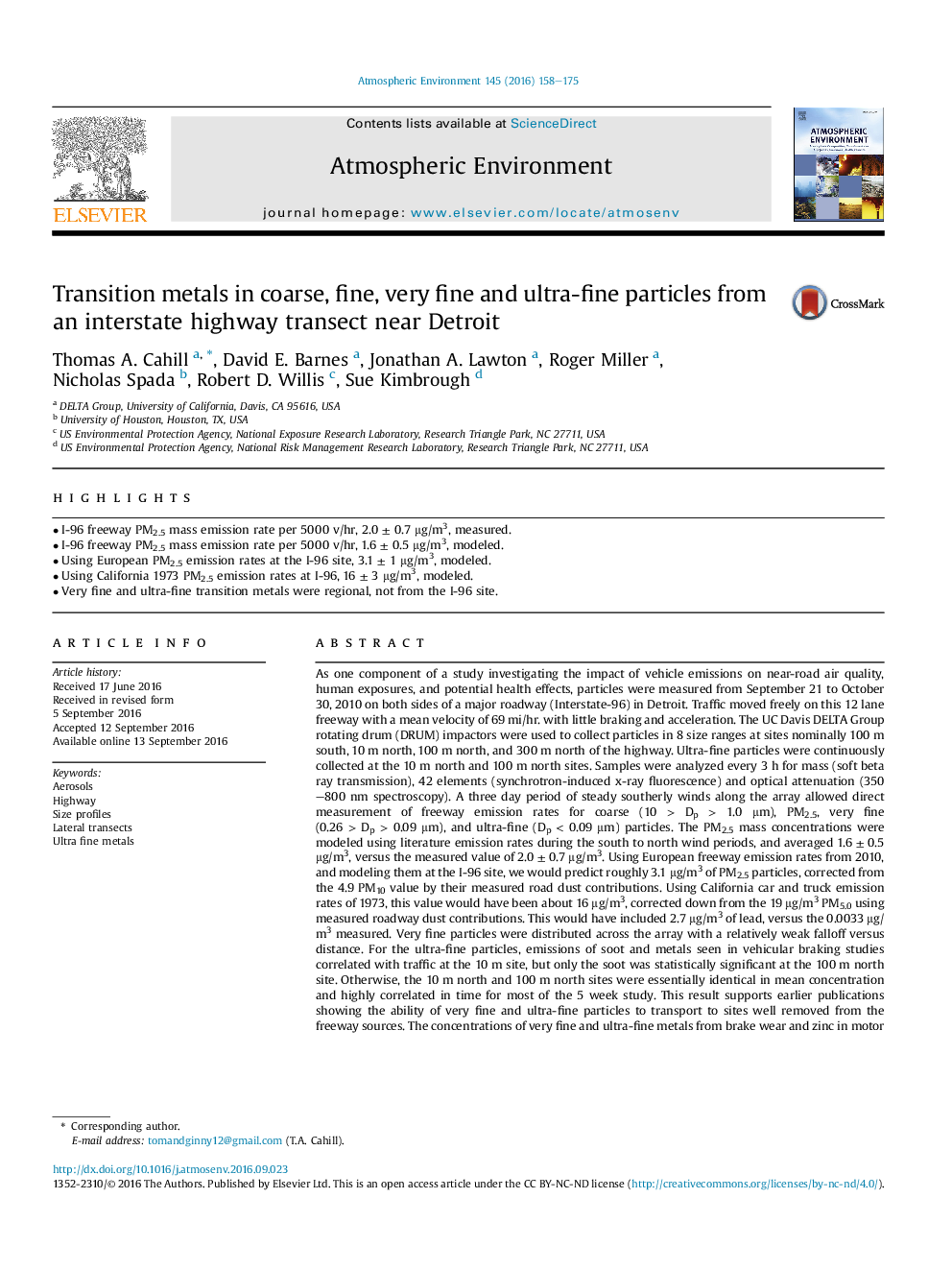| کد مقاله | کد نشریه | سال انتشار | مقاله انگلیسی | نسخه تمام متن |
|---|---|---|---|---|
| 6335840 | 1620329 | 2016 | 18 صفحه PDF | دانلود رایگان |
- I-96 freeway PM2.5 mass emission rate per 5000 v/hr, 2.0 ± 0.7 μg/m3, measured.
- I-96 freeway PM2.5 mass emission rate per 5000 v/hr, 1.6 ± 0.5 μg/m3, modeled.
- Using European PM2.5 emission rates at the I-96 site, 3.1 ± 1 μg/m3, modeled.
- Using California 1973 PM2.5 emission rates at I-96, 16 ± 3 μg/m3, modeled.
- Very fine and ultra-fine transition metals were regional, not from the I-96 site.
As one component of a study investigating the impact of vehicle emissions on near-road air quality, human exposures, and potential health effects, particles were measured from September 21 to October 30, 2010 on both sides of a major roadway (Interstate-96) in Detroit. Traffic moved freely on this 12 lane freeway with a mean velocity of 69 mi/hr. with little braking and acceleration. The UC Davis DELTA Group rotating drum (DRUM) impactors were used to collect particles in 8 size ranges at sites nominally 100 m south, 10 m north, 100 m north, and 300 m north of the highway. Ultra-fine particles were continuously collected at the 10 m north and 100 m north sites. Samples were analyzed every 3 h for mass (soft beta ray transmission), 42 elements (synchrotron-induced x-ray fluorescence) and optical attenuation (350-800 nm spectroscopy). A three day period of steady southerly winds along the array allowed direct measurement of freeway emission rates for coarse (10 > Dp > 1.0 μm), PM2.5, very fine (0.26 > Dp > 0.09 μm), and ultra-fine (Dp < 0.09 μm) particles. The PM2.5 mass concentrations were modeled using literature emission rates during the south to north wind periods, and averaged 1.6 ± 0.5 μg/m3, versus the measured value of 2.0 ± 0.7 μg/m3. Using European freeway emission rates from 2010, and modeling them at the I-96 site, we would predict roughly 3.1 μg/m3 of PM2.5 particles, corrected from the 4.9 PM10 value by their measured road dust contributions. Using California car and truck emission rates of 1973, this value would have been about 16 μg/m3, corrected down from the 19 μg/m3 PM5.0 using measured roadway dust contributions. This would have included 2.7 μg/m3 of lead, versus the 0.0033 μg/m3 measured. Very fine particles were distributed across the array with a relatively weak falloff versus distance. For the ultra-fine particles, emissions of soot and metals seen in vehicular braking studies correlated with traffic at the 10 m site, but only the soot was statistically significant at the 100 m north site. Otherwise, the 10 m north and 100 m north sites were essentially identical in mean concentration and highly correlated in time for most of the 5 week study. This result supports earlier publications showing the ability of very fine and ultra-fine particles to transport to sites well removed from the freeway sources. The concentrations of very fine and ultra-fine metals from brake wear and zinc in motor oil observed in Detroit have the potential of being a significant component in statistically established PM2.5 mortality rates.
Journal: Atmospheric Environment - Volume 145, November 2016, Pages 158-175
